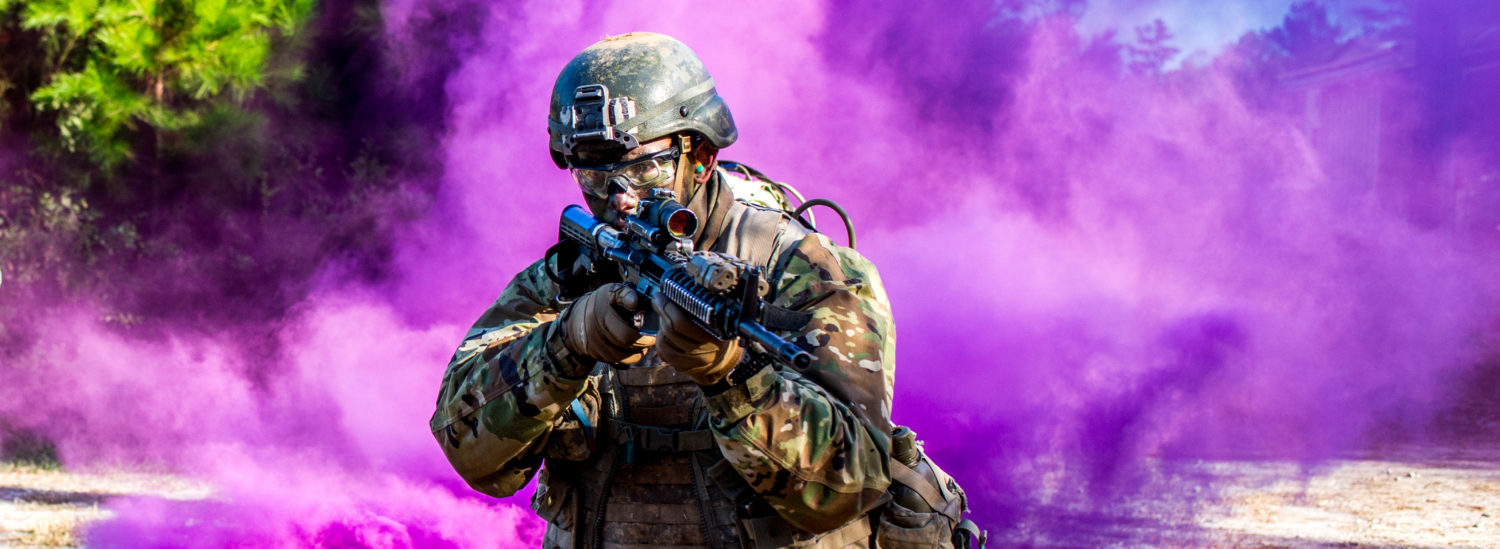Real-time strategy computer games are an underused tool for teaching tactics and strategy. Hold your skepticism and hard eye-roll for just a moment. I’m not talking about first person shooters where you look through the eyes of a soldier (although some of these games might have a place when it comes to tactical teamwork and on the spot decision-making). I am referring to tactical strategy games where the gamer control various units against another thinking, human being. They are simulations and they are not perfect, but I believe if you can teach a tactical leader the controls of some of these games you can hit home the complexity of tactical combat.

The best example I can think of is a game called Wargame: Air-land Battle. It is a strategy game set in the cold war and plays out how a conventional war could’ve played out. Most people in the game right now play in teams of 4 to 10 people per team who divide roles such as recon, logistical support, air support, indirect support, air movement, armor availability, and of course there will be multiple infantry commanders. You battle over maps that cover up to 400 square kilometers.
This game is complex. Here are just a few aspects of tactical decision-making that these games replicate for discussion and learning at the unit level:
Terrain
Every type of terrain changes how you fight. An infantry unit in a hedgerow may get flattened by a tank across the field, but in an urban environment the tables can turn. In a city, unattended amor–without boots on the ground–risks being eaten alive. Users intuitively identify Key Terrain as they observe advantages in recon, defensive positions, and inter-visibility (IV) lines that can shield your troop movements.
Reconnaissance
 Recon is essential. You ability to confirm or deny enemy presence in your area of operations will determine your force posture. It will determine if you are fighting to destroy the enemy or moving to occupy a defensive position before enemy forces arrive. The importance of recon in this is brought home in this game when you lose a third of you’re entire force within the first five minutes because you didn’t do your due diligence scouting ahead.
Recon is essential. You ability to confirm or deny enemy presence in your area of operations will determine your force posture. It will determine if you are fighting to destroy the enemy or moving to occupy a defensive position before enemy forces arrive. The importance of recon in this is brought home in this game when you lose a third of you’re entire force within the first five minutes because you didn’t do your due diligence scouting ahead.
In-game you see recon shaping the priority of fires. The player controlling artillery will focus fires on high value targets that recon has eyes on over the constant smaller skirmishes elsewhere. Players controlling AH-64s or A-10s won’t commit their valuable air support to a fight until they know ground forces have destroyed or confirmed the absence of enemy anti-air capabilities. Recon wins or loses the fight.
Movement & Maneuver
You have to deliberately plan your movement and maneuver. You can lose everything if your recon assets aren’t in place and you haven’t assigned protection priorities. Losing your combat power in transit before they even know they are in combat is a recipe for disaster. Users can see this well-replicated in air and ground movements.
Synchronization
Coordination is necessary and hard. This game stresses any one decision-maker with more assets than they can manage. You have to delegate to acheive focused effort. But even then, allocating resources at the right time and the right place can be extremely difficult. You can leave the success of a poorly organized attack to chance, but an organized assault is preferable. Watching it all come together in a Musicians of Mars type of fashion is something to behold. Seeing the recon identify the enemy, air support and indirect fires pummel defenders, armor screening for the close assault, and infantry finish the job under obscuration and covering fire is a beautiful thing.
Logistics
Logistics will frustrate and break you. An infantry unit may have anti-armor and the ability to destroy tanks from a defensive position at range. They can hold their position for a while, and may be able to fend of an initial attack. But once the TOW missiles and machine gun ammo runs out, they might as well run and hide. Same goes for something like surface to air missiles (SAMs). You may destroy two bombers, but without resupply the third bomber will kill you. Sometimes, the “loggy” wins singlehandedly wins by resupplying ammo and fuel, and repairing the APCs.
–
These tactical strategy games are not just limited to the 30 year old who goes by Warlock and lives in his mother’s basement. They are not a means of replacing the value gained by reps at CTCs or home station live training. But they can play a role, in the LVC-G repertoire, to improve tactical leader’s decision-making. Like any virtual or gaming tool, if it devolves into free-form playtime, then you won’t see the maximum benefits. Make sure you approach these the same way as you would any other operation–with the 8-Step Training Model. Develop key training objectives, a desired end-state, and make sure you are using it as an opportunity to teach. Add these games to your self-development or to your unit’s TDG tool-kit and see the benefits.
Subscribe to The Company Leader!
Complete archive of The Company Leader Posts
